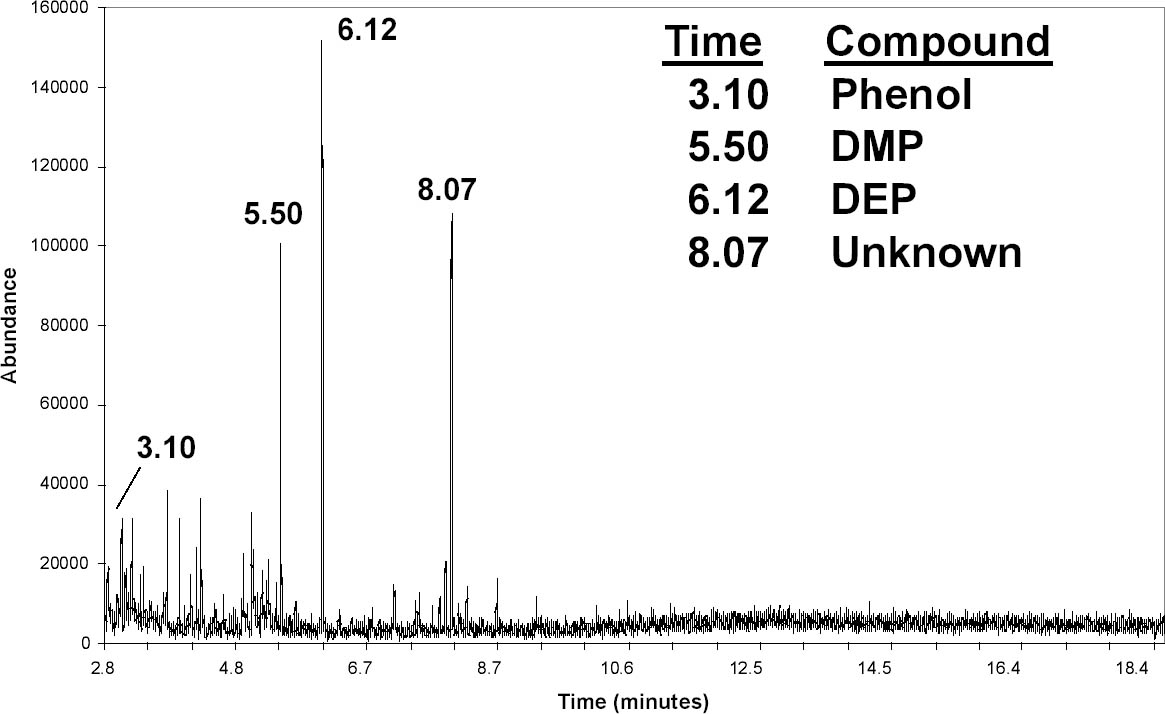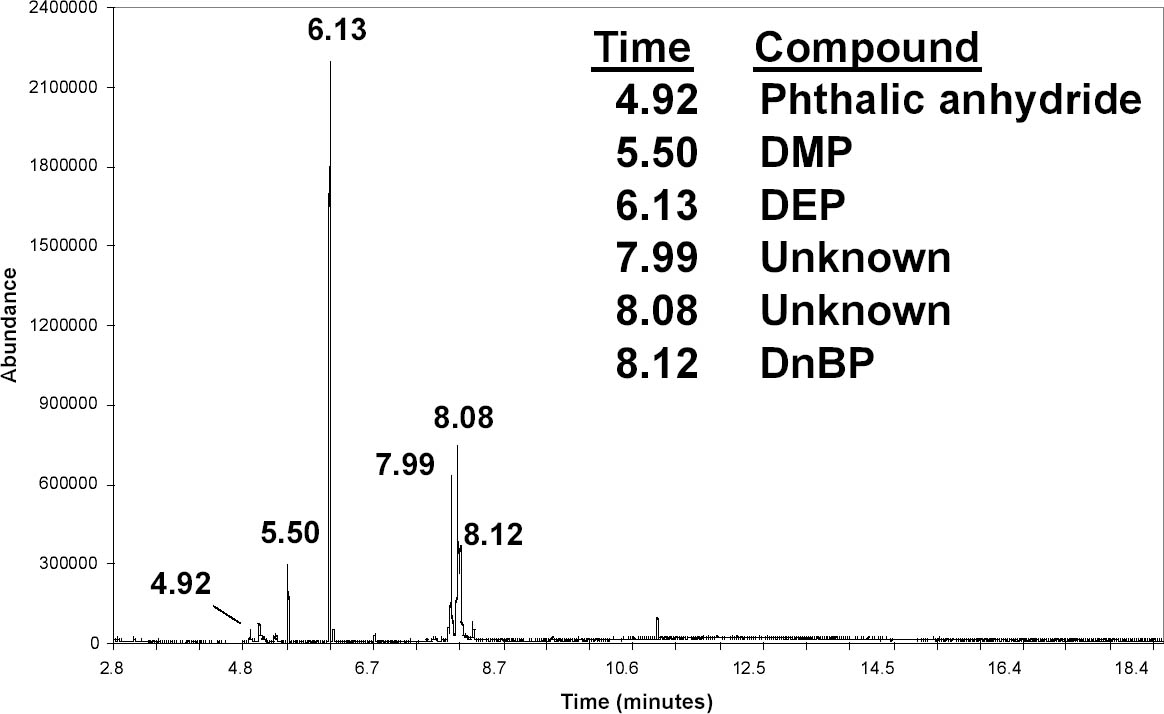ANALYSIS OF LAMINATED DOCUMENTS USING SOLID-PHASE MICROEXTRACTION
Mark Ormsby
5 CONCLUSIONS
This project demonstrates that SPME–GC-MS is a very useful technique for studying plasticizers and other additives in CA laminated documents. The method is simple and sensitive, and data can be collected with minimal risk to the objects. Several common plasticizers and additives were easily identified using DI-SPME with ethanol. Various brands of CA film could be readily distinguished. HS-SPME also provided useful data with a nondestructive method. Both techniques detected products from the breakdown of plasticizers.
With further research it may be possible to use the SPME procedure to better understand the relationship between the original composition of the lamination
Fig. 7.
The total ion chromatogram from the laminated 1936 newspaper is shown.
 |
Fig. 8.
Scraps of CA removed from some of the Louisiana Purchase documents during delamination were analyzed by DISPME. DMP, DEP, and DnBP were found, as well as phthalic anhydride.
 |
film and the present condition of a document. This information would supplement earlier accelerated aging studies. SPME could then provide an efficient method for identifying documents that are more susceptible to degradation, gathering data on breakdown products to assess the objects' condition, and anticipating difficulties that might be encountered with delamination or other treatments.
These techniques for studying plasticizers in laminated documents can easily be adapted to many other types of objects and compounds. Thus far, the majority of work with SPME in conservation has focused on gaseous pollutants, but there are many other potential applications for this simple yet versatile technique.
ACKNOWLEDGEMENTS
I would like to thank my colleagues in the Research and Testing Laboratory and the Document Conservation Laboratory at National Archives and Records Administration for their assistance and suggestions. In particular, I would like to thank Susan Page, who treated the Louisiana Purchase documents and suggested the SPME analysis. My thanks also to the late William K. Wilson, National Bureau of Standards chemist, for sharing his vast knowledge of lamination and preservation.
|